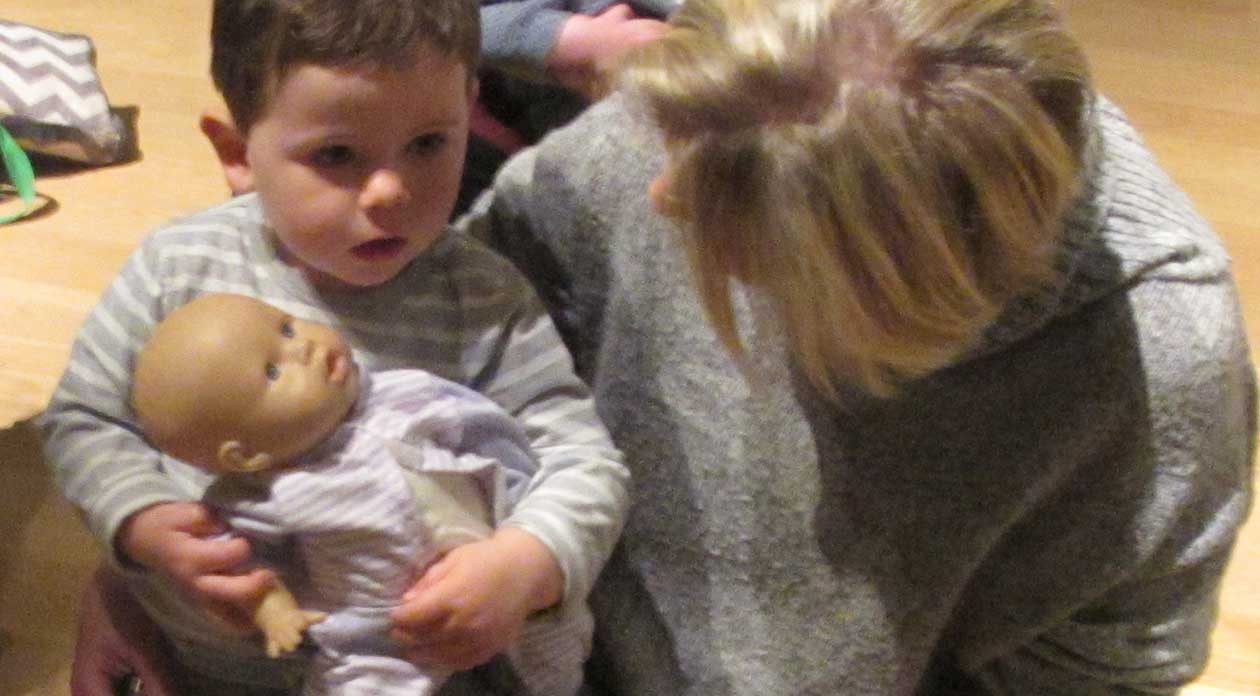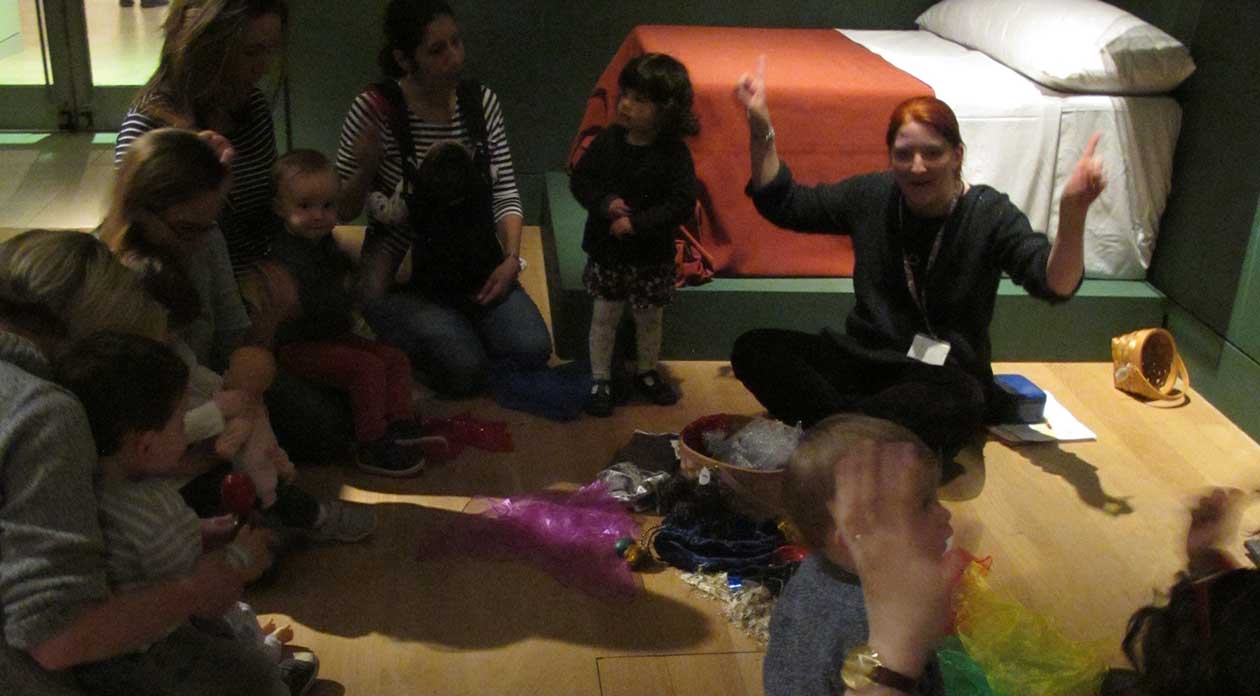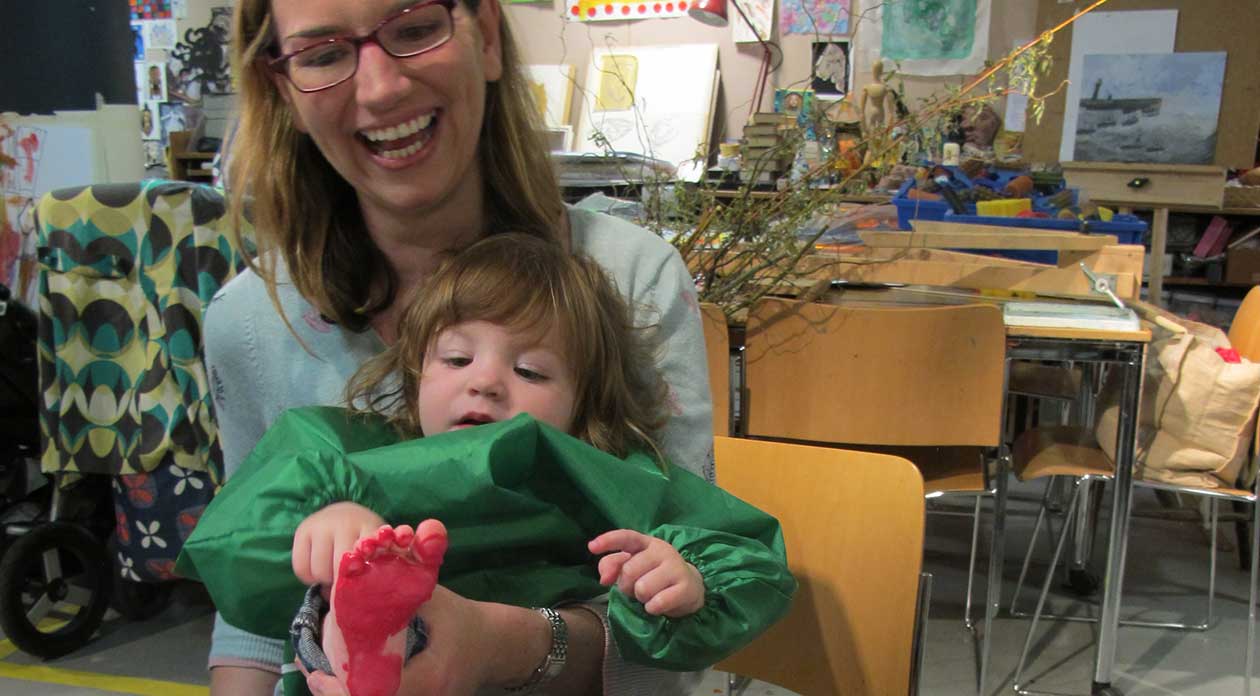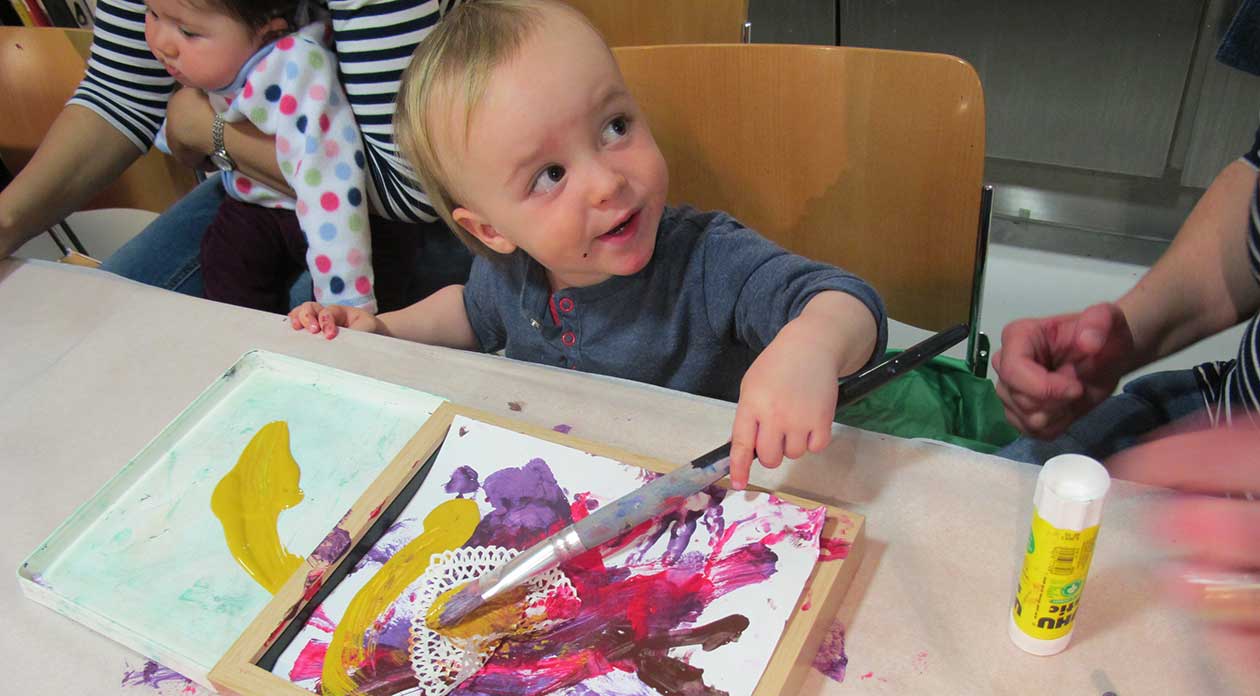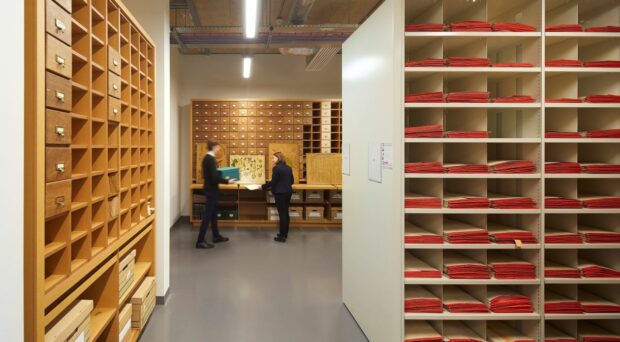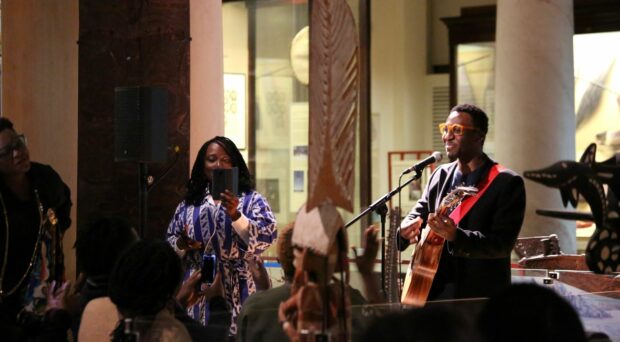The Madonnas and Miracles exhibition at the Fitzwilliam Museum provides a multi-sensory insight into daily religious life in the Italian Renaissance. It inspired children under three and their adults to think about all the ways in which we show our love and devotion.
Museum educators spend their time finding bridges to connect learners and collection objects. We look for common ground and shared experiences that will make new ideas understandable. However, making connections for this project seemed daunting at first: how could I make devotional religious practices of Renaissance Italy interesting and relatable to very young babies visiting the museum? Once I saw the beautifully-curated and multi-sensorial exhibition though, I could instantly see that there were plenty of ways in and lots of connections waiting to be made.
Here’s what we did
Baby Magic at the Fitzwilliam Museum is a pre-bookable session for 0-2 year olds and their adults. The families involved with this session were introduced to the Madonnas and Miracles exhibition through the Christ Child statuette from the Monastero Santa Chiara, which is being seen outside Italy for the first time. We explained simply that this object is used to help people practise how to love and care for someone. The babies were then given a choice of dolls to cuddle, rock and sing to, although some preferred to be cuddled themselves, and we enjoyed a moment of sharing affection.
The everyday objects decorated with Christian imagery as daily reminders of religious devotion were also enjoyed by the babies, who explored a range of play resources including bowls and cutlery as a way of discovering different materials and decorative features. Being able to hold familiar items and move them in habitual ways is an important way of feeling safe and connected. This is powerfully shown in the display of rosaries in the exhibition.
The Virgin and Child from the studio of Botticelli displayed in a room evocative of Italian Renaissance bedchamber inspired us too. The babies were given richly-coloured fabrics recalling those in the painting which they draped over themselves, exploring the colours and textures through touch. Using gentle musical instruments as an accompaniment, and as way for the pre-verbal members of the group to make themselves heard, we sang lullabies and nursery rhymes together. Rock-a-bye-baby is always a favourite, as is Twinkle, Twinkle, Little Star. This time, though we had the extra twist of singing in Italian: Brilla, brilla la stellina! Babies can distinguish between different languages from a really early age, and it was fascinating to watch their reactions to the new sounds!
Sam McBratney and Anita Jeram’s lovely picturebook ‘Guess How Much I Love You?’ was our way in to understanding some of the exhibition objects that demonstrate how people have tried to use buildings, art, and journeys over long distances such as pilgrimages to try to express overwhelming feelings of love and devotion that might defy words alone.
The babies and adults worked together to produce Memory Frames in response to the exhibition. They incorporated special family photos and mementos of key moments alongside painting and handprints made by the babies. We hope to display these near the Madonnas and Miracles exhibition soon.
‘Lovely – had a wonderful time.’ Childminder of 18 month old
‘Today I liked: the babies, the items we could play with, the story, the art in the studio’ Mum of 1 year old
‘Would recommend’ – Mum of 9 month old
If you would like to know more about the exhibition please visit the Fitzwilliam Museum website. To find out what else is happening at the museum for babies, toddlers and preschoolers, please contact Nicola Wallis.
With grateful thanks to Victoria Avery, Nathan Huxtable and Alison Ayres for making this event a success!


